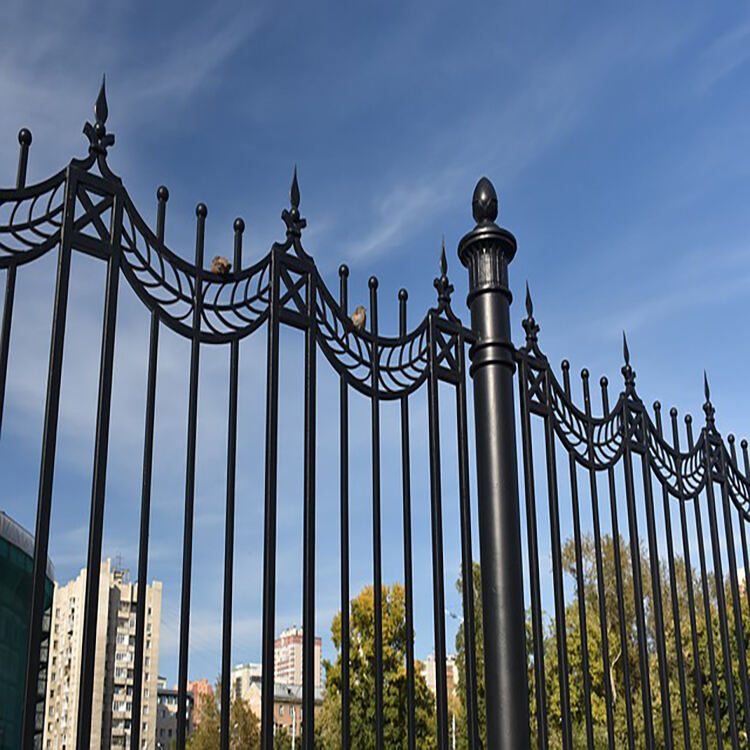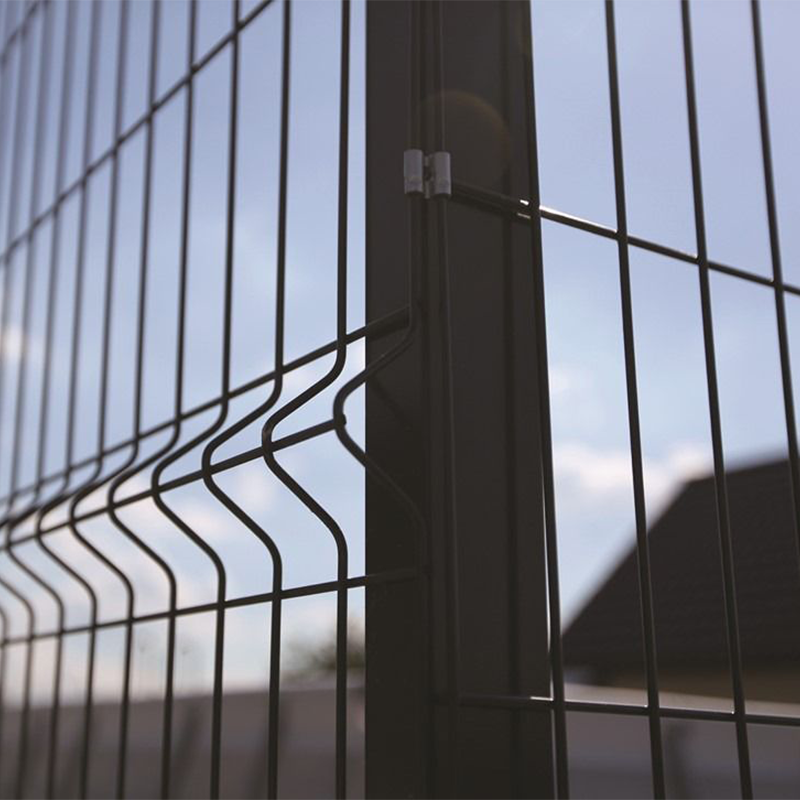Key Benefits of Temporary Fencing for Construction Sites
Enhanced Security with Temporary Fence Panels
Temporary fence panels play a crucial role in enhancing security at construction sites. These panels act as a visual deterrent, discouraging unauthorized access and potential intruders from targeting unprotected areas. They can be equipped with locking mechanisms and integrated with surveillance cameras, which further increases the security level provided on-site. A study reflecting real-world statistics shows a significant reduction in theft and vandalism where temporary fencing solutions have been implemented. This not only protects valuable property but also creates a safer working environment for construction teams.
Improved Safety Compliance for Hazard Mitigation
Temporary fencing is essential for maintaining safety compliance on construction sites by segregating hazardous zones from general public access. This segregation is critical in preventing potential accidents and injuries, thus upholding safety standards as required by regulatory bodies like OSHA. Compliance with these safety regulations demonstrates a commitment to protecting both workers and passersby from site-related risks. Moreover, effective hazard mitigation through the use of temporary fencing can lead to lower insurance premiums and reduced liability, offering financial benefits alongside safety enhancements.
Flexible Installation for Changing Site Needs
The flexibility provided by temporary construction fences is invaluable for adapting to the changing demands of construction projects. These fences can be quickly and efficiently deployed, removed, or relocated, thereby minimizing project downtime and labor costs. Such adaptability ensures that modifications to site layouts can be made swiftly without necessitating extensive structural changes. As a result, companies often experience streamlined workflows and more consistent project timelines, ultimately leading to more efficient project completion and greater client satisfaction.
Types of Temporary Construction Fencing Solutions
Modular Temporary Fence Panels for Rapid Deployment
Modular temporary fence panels offer an efficient solution for construction environments demanding quick setup and flexibility. These panels are designed to be easily assembled and disassembled, allowing construction teams to rapidly adjust fencing layouts as site requirements evolve. Not only can these panels be customized in terms of height and configuration, but they also contribute to reduced project delays. By incorporating modular solutions, construction sites can enhance operational efficiency, ensuring smooth project timelines and minimizing labor costs associated with extensive infrastructure changes. This adaptability is key for dynamic construction projects where quick responsiveness to changing circumstances is paramount.
Temporary Chain Link Fence Durability
Temporary chain link fences are widely recognized for their robustness and lasting durability, making them ideal for protecting construction sites over both short and long periods. Constructed from strong materials, these fences can endure diverse weather conditions, maintaining security without necessitating frequent repairs. Statistical data underscores their reliable performance, indicating that well-maintained chain link fencing can provide continuous protection for several years. Ideal for temporary construction sites, these fences ensure a reliable security barrier, safeguarding against unauthorized access and significantly reducing the risk of theft and vandalism.
Crowd Control Barriers for High-Traffic Areas
Crowd control barriers are invaluable when managing pedestrian movement around construction sites, especially in high-traffic areas. These barriers help define clear pathways, which not only prevents unauthorized access to work zones but also enhances overall site organization. With their easy-to-use locking mechanisms, crowd control barriers effectively segregate construction areas, ensuring pedestrian safety and compliance with safety regulations. By strategically implementing crowd control barriers, construction managers can significantly improve site safety standards, mitigating risks associated with high volumes of pedestrian traffic, and maintaining orderly work environments.
Cost-Effective Installation and Maintenance Strategies
Minimizing Labor Costs with Pre-Assembled Systems
Pre-assembled fencing systems offer a practical solution to minimize labor costs during installation. These systems are designed for quick setup, which can dramatically decrease the amount of labor required, freeing up resources for critical construction tasks. The ability to install fencing efficiently means that companies can reduce downtime and redirect workforce efforts toward advancing other areas of a project. Utilizing pre-assembled solutions can save companies upwards of 20% on labor costs, highlighting their benefit in cost-effective installation strategies.
Reducing Long-Term Expenses Through Reusability
Choosing temporary fencing that boasts reusability can substantially cut down long-term expenses. By investing in quality materials, companies can ensure that their fencing solutions are durable and require fewer replacements, contributing to significant savings over time. Evidence suggests that businesses prioritizing reusability in their temporary fencing options can lower their budget by as much as 30%. This strategic approach not only reduces overhead costs but also supports sustainable practices by maximizing the lifespan and utility of construction site equipment.
Rental vs. Purchase: Evaluating Budget Options
Deciding between renting or purchasing temporary fencing is crucial for budget optimization and depends on project-specific factors. Factors such as project duration and frequency of use can determine whether renting or purchasing holds more financial advantage. Rental options often provide cost efficiency for short-term needs, while purchasing may prove beneficial for ongoing projects, where repeated use of fencing is anticipated. Analyzing case studies of similar projects can provide valuable insights, helping companies assess which approach may deliver a superior return on investment (ROI) in their construction ventures.
Meeting OSHA Standards for Construction Site Safety
Compliance with OSHA regulations is essential for maintaining construction site safety. OSHA standards require that temporary fencing act as necessary barriers and markers to prevent access to restricted areas, ensuring worker and public safety. Non-compliant sites run a high risk of accidents and can incur significant fines and legal issues. In fact, statistical evidence suggests that sites adhering to these standards experience 50% fewer accidents than those that do not. Therefore, incorporating temporary fencing, like temporary chain link fence, can significantly enhance compliance and reduce workplace hazards.
ADA Accessibility Considerations Near Work Zones
Ensuring ADA accessibility near construction work zones is a legal mandate and crucial for creating inclusive environments. ADA-compliant temporary fencing should accommodate accessible pathways for individuals with disabilities. This not only meets legal requirements but also reflects corporate social responsibility. Failure to comply with ADA guidelines can lead to legal troubles and a negative public perception. Installing temporary fencing for construction sites with ADA considerations helps avoid such pitfalls, showcasing a commitment to community equity and accessibility.
Local Permit Requirements for Temporary Barriers
Adhering to local permit requirements is crucial when installing temporary barriers on construction sites. Municipal regulations can vary widely, making thorough research and understanding of local codes necessary to avoid legal complications. For instance, the necessity of permits for specific projects, such as temporary construction fence, depends on the scope of work and location. Companies can mitigate the risk of costly fines or project delays by ensuring compliance with local laws. This proactive approach to obtaining necessary permits will streamline operations and maintain construction schedules efficiently.
Table of Contents
- Key Benefits of Temporary Fencing for Construction Sites
- Types of Temporary Construction Fencing Solutions
- Cost-Effective Installation and Maintenance Strategies
- Meeting OSHA Standards for Construction Site Safety
- ADA Accessibility Considerations Near Work Zones
- Local Permit Requirements for Temporary Barriers



